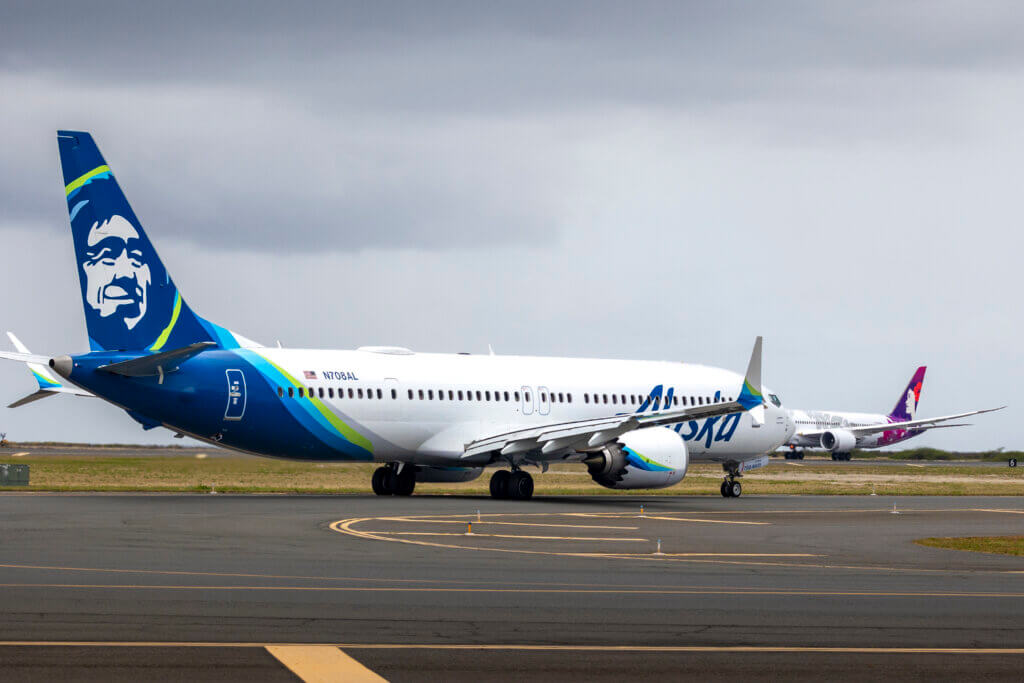The thrice-extended Alaska-Hawaiian DOJ review period expired last night without any action taken by the Department of Justice, paving the way for the two airlines to combine. Additional steps remain before Alaska’s acquisition may close; however, this was the largest remaining one.
Announced last December, Alaska Airlines is seeking to acquire Hawaiian Airlines. For Alaska, this is a means to gain access to a widebody fleet and the knowledge needed to operate and maintain these bigger birds. Doing so also allows them to diversify their business, helping them to better fend off Delta’s continued onslaught on their primary hub in Seattle. For Hawaiian, the acquisition is a lifeline as the airline continues to bleed cash, and concerns that they’d need to enter another round of bankruptcy loomed over them, especially as Southwest continues to hammer its ability to generate revenue on its bread-and-butter inter-island routes.
Alaska-Hawaiian DOJ Review Period Expired
As we all know, the original Department of Justice review period was supposed to end on August 5. Shortly before that date, the DOJ asked for an extension to August 15, followed by another to the 16th, and then the 20th at 12:01 am ET. Well, as I write this post, the Alaska-Hawaiian DOJ review period expired without it taking action. As a result, the DOJ can no longer move to block the acquisition.
However, what we don’t know about the negotiations is what concessions (if any) Alaska Air agreed to in order to keep the DOJ from suing to block their transaction. And I’m sure concessions were made in the form of intra-Hawai’i service guarantees and, perhaps, gate/slot divestitures at certain airports in Hawai’i and/or the West Coast.
Regardless, Alaska was likely going to divest its pre-merger gate rights in Hawai’i as it moves to consolidate its operations with Hawaiian’s. In Honolulu, that means we’ll likely see Alaska move from E Gates in the Central Concourse in Terminal 2 to the new Mauka Concourse in Terminal 1.
Update
Apparently, the DOJ hasn’t required any concessions.
Next Steps
As I reported recently, though the Alaska-Hawaiian DOJ review period expired, the airlines are still waiting for the Department of Transportation to approve their operating exemptions. They applied for these exemptions back in July, which will allow both airlines to operate independently under the same ownership while they work towards consolidating under a single operating certificate.
It’s worth pointing out that the Secretary of Transportation decides whether or not to issue the exemption and must determine whether the combination is in the best interest of the traveling public. Being that state officials in Hawai’i and Washington, and the DOJ aren’t raising any red flags, it’s fairly certain that Alaska and Hawaiian will receive this exemption.
Once they receive this approval, the two airlines will move toward closing the transaction.
Alaska-Hawaiian DOJ Review Period Expired, Final Thoughts
I was confident that the antitrust review would go well from the beginning. After all, a combined Alaska and Hawaiian Airlines would control just over half of the currently available air seats between Hawai’i and the West Coast. However, it’s a situation that would be easy to remedy, and these routes are mostly highly competitive. Sure, there are some outliers out there, but that’s also because there isn’t enough demand to really support more flights.
Within Hawai’i, nothing changes. Hawaiian has either been a monopoly or competed with one or two other airlines. The main concern here is that Alaska-Hawaiian may reduce capacity between the islands to help bring these routes out of the red, but this is likely where Alaska agreed to make concessions to maintain service, too.
At any rate, I’m looking forward to seeing what the future for these two airlines holds, especially now that the Alaska-Hawaiian DOJ review period expired. After all, consumers will enjoy more choices as a singular loyalty program will serve both airlines, and Hawaiian will finally become part of a global airline alliance. That said, a lot of interesting questions remain unanswered, including what co-brand credit cards will look like. But at least we now know that the merger may proceed.

